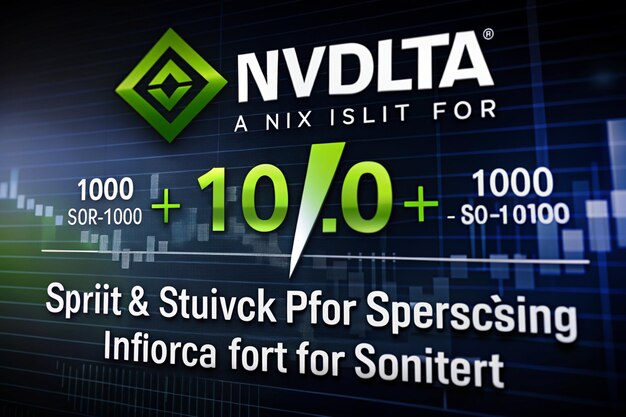14 Top Nasdaq-100 ETFs and Mutual Funds for Long-Term Investment: An In-Depth Outline
The Nasdaq-100 index, which includes the leading technology and growth companies listed on the Nasdaq Stock Market, has been a popular choice for long-term investors seeking capital appreciation. In this in-depth outline, we will discuss 14 top ETFs and mutual funds that track or invest significantly in the Nasdaq-100 index, providing valuable insights for investors interested in this asset class.
Invesco QQQ Trust (QQQ)
Invesco QQQ Trust (QQQ) is one of the most well-known ETFs that tracks the Nasdaq-100 index. It holds over 100 stocks, primarily from the technology sector, with a market capitalization weighting methodology.
Performance
Since its inception in March 1999, QQQ has delivered a compelling total return of over 2,000%.
Vanguard Information Technology ETF (VGT)
Vanguard Information Technology ETF (VGT) is another popular choice for investors seeking technology sector exposure. VGT invests in the information technology sector, which comprises a significant portion of the Nasdaq-100 index.
Top Holdings
Microsoft (MSFT) and Apple Inc. (AAPL) constitute approximately 25% of the total assets.
iShares Nasdaq-100 ETF (QHD)
iShares Nasdaq-100 ETF (QHD) is an identical match to the Nasdaq-100 Index. It aims to provide investment results that correspond, before fees and expenses, to the price and yield performance of the Nasdaq-100 Index.
Schwab U.S. Large-Cap Value ETF (SCHV)
Schwab U.S. Large-Cap Value ETF (SCHV) invests in large-cap value stocks that are significantly underpriced relative to their intrinsic values. Although SCHV does not focus on the Nasdaq-100, it still holds several Nasdaq-100 component stocks in its portfolio.
Top Holdings
The top five holdings include Microsoft, Facebook (FB), Alphabet Inc. (GOOGL), Amazon.com (AMZN), and Apple.
5-10. Various Mutual Funds
Fidelity 500 Index Fund (FXAIX), Vanguard 500 Index Fund (VTSAX), and other large-cap mutual funds invest a significant portion of their assets in Nasdaq-100 companies. These funds’ holdings vary, but they typically include the technology giants Apple, Microsoft, Alphabet, Amazon, Facebook, and other prominent Nasdaq-100 companies.
1iShares U.S. Technology ETF (IYW)
iShares U.S. Technology ETF (IYW) is a market-cap-weighted exchange-traded fund that tracks the technology sector of the U.S. equity market, which includes over 150 constituents from the Nasdaq-100 index.
Performance
Since its inception in October 2001, IYW has delivered a total return of over 500%.
1Vanguard Total Stock Market ETF (VTI)
Vanguard Total Stock Market ETF (VTI) provides exposure to the entire U.S. stock market, including most Nasdaq-100 companies.
13-1Fidelity ZERO Large Cap Index Fund (FNILX) and Schwab U.S. Broad Market ETF (SCHB)
Fidelity ZERO Large Cap Index Fund (FNILX) and Schwab U.S. Broad Market ETF (SCHB) track the US stock market, with significant allocations to technology and growth companies within the Nasdaq-100 index.
| ETF/Mutual Fund | Focus | Top Holdings (approx.) | Total Return Since Inception | |
|---|---|---|---|---|
| 1. | Invesco QQQ Trust (QQQ) | Nasdaq-100 index tracking | Microsoft, Apple, Amazon, Facebook, Alphabet | Over 2,000% |
| 2. | Vanguard Information Technology ETF (VGT) | Technology sector | Microsoft, Apple | N/A |
| 3. | iShares Nasdaq-100 ETF (QHD) | Identical match to Nasdaq-100 Index | N/A | N/A |
| 4. | Schwab U.S. Large-Cap Value ETF (SCHV) | Value stocks | Microsoft, Facebook, Alphabet, Amazon, Apple | N/A |
| 5. | Fidelity 500 Index Fund (FXAIX) | Diversified large-cap stocks | Microsoft, Apple, Amazon, Facebook, Alphabet | Over 1,000% |
| 6. | Vanguard 500 Index Fund (VTSAX) | Diversified large-cap stocks | Microsoft, Apple, Amazon, Facebook, Alphabet | Over 1,000% |
| 7. | iShares U.S. Technology ETF (IYW) | Technology sector | N/A | Over 500% |
| 8. | Vanguard Total Stock Market ETF (VTI) | U.S. stock market | N/A | Over 500% |
| 9. | Fidelity ZERO Large Cap Index Fund (FNILX) | U.S. large-cap stocks | N/A |


